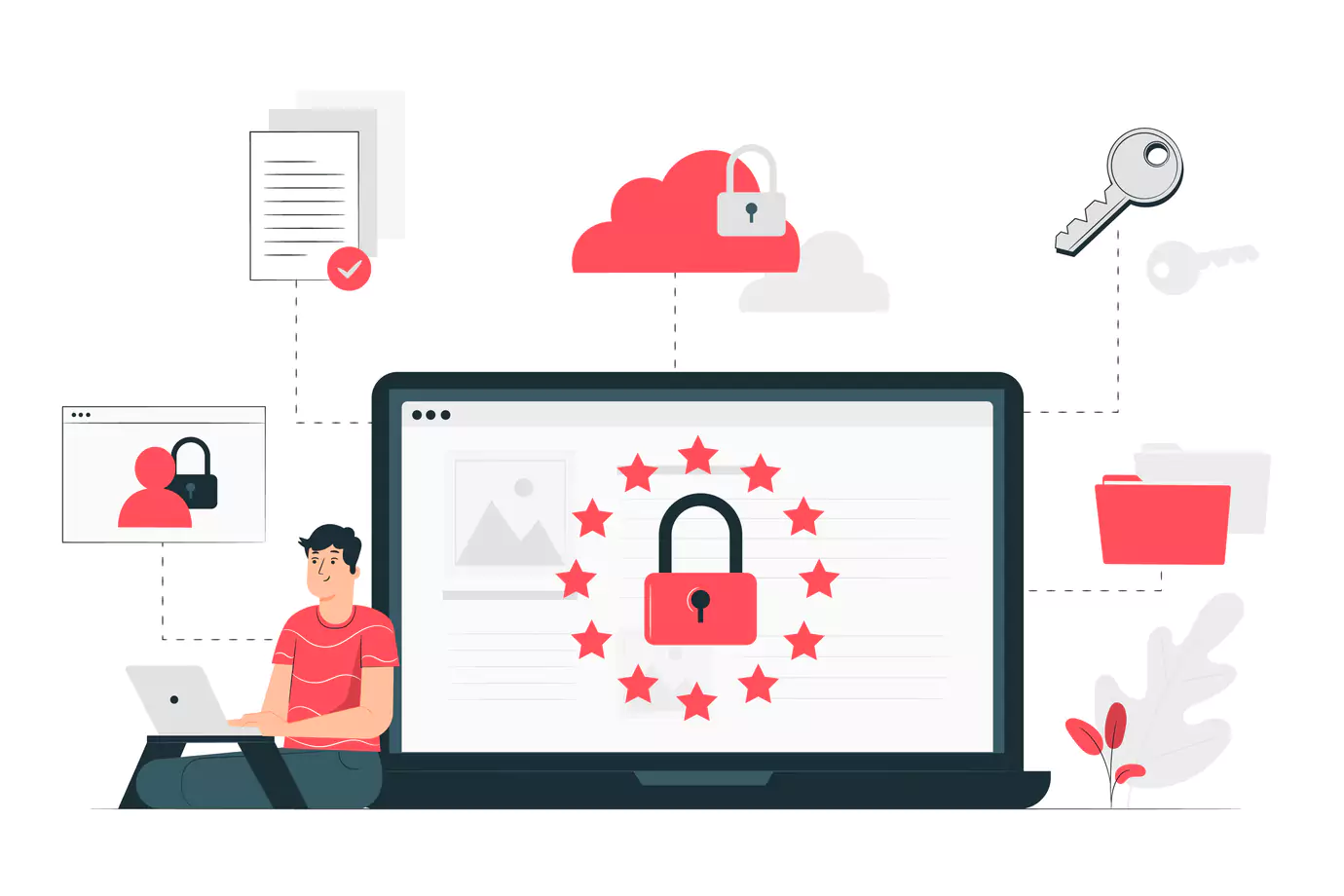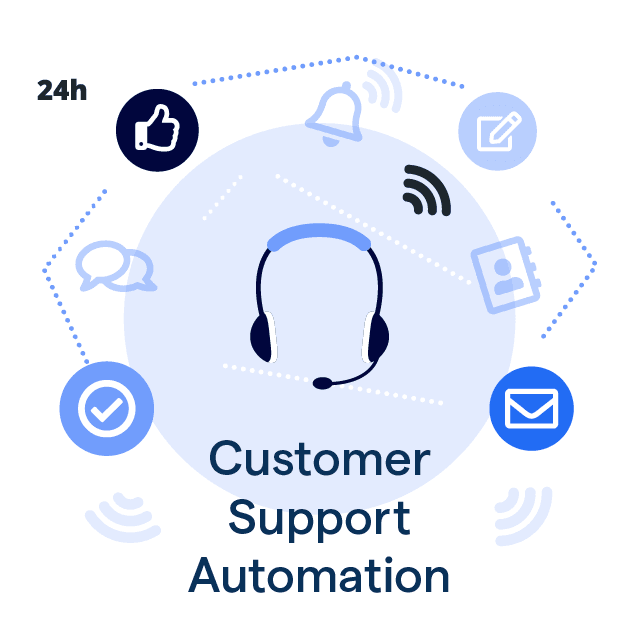What is Customer Support Automation?
Customer Support Automation refers to the use of technology, specifically artificial intelligence (AI), machine learning, and other digital tools, to handle customer service tasks without the need for human intervention. This can include answering common questions, resolving issues, or providing information to customers through various channels like chatbots, email, or social media.
Automation is becoming increasingly important in the customer support industry as businesses strive to provide faster, more efficient, and personalized service to their customers. By automating routine tasks, customer support teams can focus on more complex issues and deliver a higher level of service, ultimately leading to increased customer satisfaction and loyalty.
The primary goal of customer support automation is to enhance the customer experience by providing quick and accurate solutions to their problems. Other objectives include reducing operational costs, increasing efficiency, and enabling businesses to scale their customer support operations with ease.
Why Implement Customer Support Automation?
Increased Efficiency and Productivity
Automating repetitive tasks allows customer support agents to focus on more complex issues that require human intervention, resulting in increased efficiency and productivity. This also reduces the chances of errors and inconsistencies in customer support responses.
Cost Reduction
Customer support automation helps businesses save money by reducing the need for additional human resources. Automated systems can handle a large volume of customer queries, allowing businesses to maintain a smaller customer support team without compromising on service quality.
Improved Customer Satisfaction

Customers expect quick and accurate responses to their queries. Automation allows businesses to provide instant support, improving customer satisfaction and increasing the likelihood of repeat business and positive word-of-mouth.
Scalability and Growth
As a business grows, so does the volume of customer support queries. Automation enables businesses to handle increased customer support demands without the need for additional staff, ensuring a seamless customer experience during periods of growth.
Types of Customer Support Automation
Chatbots and Virtual Assistants
Chatbots and virtual assistants use AI (artificial intelligence) and natural language processing (NLP) to understand and respond to customer queries in real-time. They can handle a wide range of tasks, from answering frequently asked questions to guiding customers through troubleshooting processes.
Automated Ticketing Systems
Automated ticketing systems streamline the process of managing customer support requests by automatically assigning, prioritizing, and tracking support tickets. This ensures that customer issues are handled promptly and efficiently.
Knowledge Base and Self-Service
A knowledge base is a repository of information and resources that customers can access to find answers to their questions without contacting support. Self-service options, such as FAQs and help articles, empower customers to resolve issues independently, reducing the workload on customer support teams.
AI and Machine Learning
AI and machine learning technologies enable customer support automation systems to learn from past interactions and improve their performance over time. This allows for more accurate and personalized support, resulting in better customer experiences.
When to Implement Customer Support Automation?
Identifying the Right Time
The ideal time to implement customer support automation is when a business experiences growth, increased customer support demands, or when the existing support processes are inefficient or costly.
Assessing Current Customer Support Performance
Before implementing automation, businesses should evaluate their current customer support performance to identify areas for improvement and determine which automation tools and technologies will be most beneficial.
Evaluating Automation Readiness
Businesses should also assess their readiness for automation by considering factors such as available resources, budget, and existing infrastructure.
How to Implement Customer Support Automation?
Developing a Strategy
A well-defined strategy is essential for successfully implementing customer support automation. This should include defining goals, selecting appropriate automation tools, and establishing a timeline for implementation.
Selecting the Right Tools and Technologies
There are numerous customer support automation tools and technologies available, each with its own strengths and weaknesses. Businesses should carefully evaluate their options and choose the tools that best align with their needs and objectives.
Integration with Existing Systems
Successful customer support automation requires seamless integration with a business's existing systems, such as CRM and helpdesk software. This ensures that customer data is consistent and easily accessible across all platforms.
Training and Change Management
Implementing customer support automation may require a shift in mindset and processes for customer support agents. Providing training and support during the transition can help ensure a smooth implementation and maximize the benefits of automation.
Suggested Reading:
Customer Training
Who Benefits from Customer Support Automation?
Customers
Customers benefit from faster, more accurate support, as well as the ability to find answers to their questions through self-service options.
Customer Support Agents
Agents benefit from reduced workloads and the ability to focus on more complex issues that require human intervention.
Business Owners and Managers
Business owners and managers benefit from reduced operational costs, increased efficiency, and the ability to scale customer support operations with ease.
Challenges and Limitations of Customer Support Automation
Maintaining a Human Touch
While automation can greatly improve efficiency, it's important to strike a balance between automated and human interactions to ensure customers still feel valued and understood.
Data Privacy and Security Concerns

Automated customer support systems must adhere to strict data privacy and security regulations to protect customer information and maintain trust.
Overcoming Technical Barriers
Implementing customer support automation may require overcoming technical barriers, such as integrating with existing systems or ensuring compatibility with various devices and platforms.
Measuring the Success of Customer Support Automation
Key Performance Indicators (KPIs)
KPIs, such as response times, resolution rates, and customer satisfaction scores, can be used to measure the success of customer support automation initiatives.
Customer Feedback and Surveys
Gathering feedback from customers through surveys and reviews can provide valuable insights into the effectiveness of automated customer support processes.
Continuous Improvement and Optimization
Regularly reviewing and optimizing customer support automation systems ensures they continue to meet the needs of both the business and its customers.
Best Practices for Customer Support Automation
Balancing Automation and Human Interaction
Striking the right balance between automation and human interaction is essential for maintaining a high level of customer satisfaction.
Personalization and Customization
Automated customer support systems should be personalized and customized to meet the unique needs and preferences of each customer.
Regular Updates and Maintenance
Keeping customer support automation systems up-to-date and well-maintained ensures they continue to provide efficient, accurate, and reliable support.
Frequently Asked Questions
How does customer support automation improve response times?
Automated systems can handle multiple inquiries simultaneously, providing instant responses and reducing wait times for customers.
What tools are commonly used for customer support automation?
Chatbots, AI-powered helpdesk systems, and automated email responders are commonly used tools for customer support automation.
Can customer support automation completely replace human agents?
While automation can handle routine tasks, human agents are still needed for complex issues and providing a personalized touch.
How does customer support automation impact customer satisfaction?
Automation can increase satisfaction by providing quick, accurate responses, but maintaining a balance with human interaction is crucial.
Is customer support automation cost-effective for small businesses?
Yes, automation can be cost-effective, as it reduces labor costs and helps small businesses scale their customer support efficiently.

